BA’s newest flight reconnects us to Belgrade, Europe’s last great capital
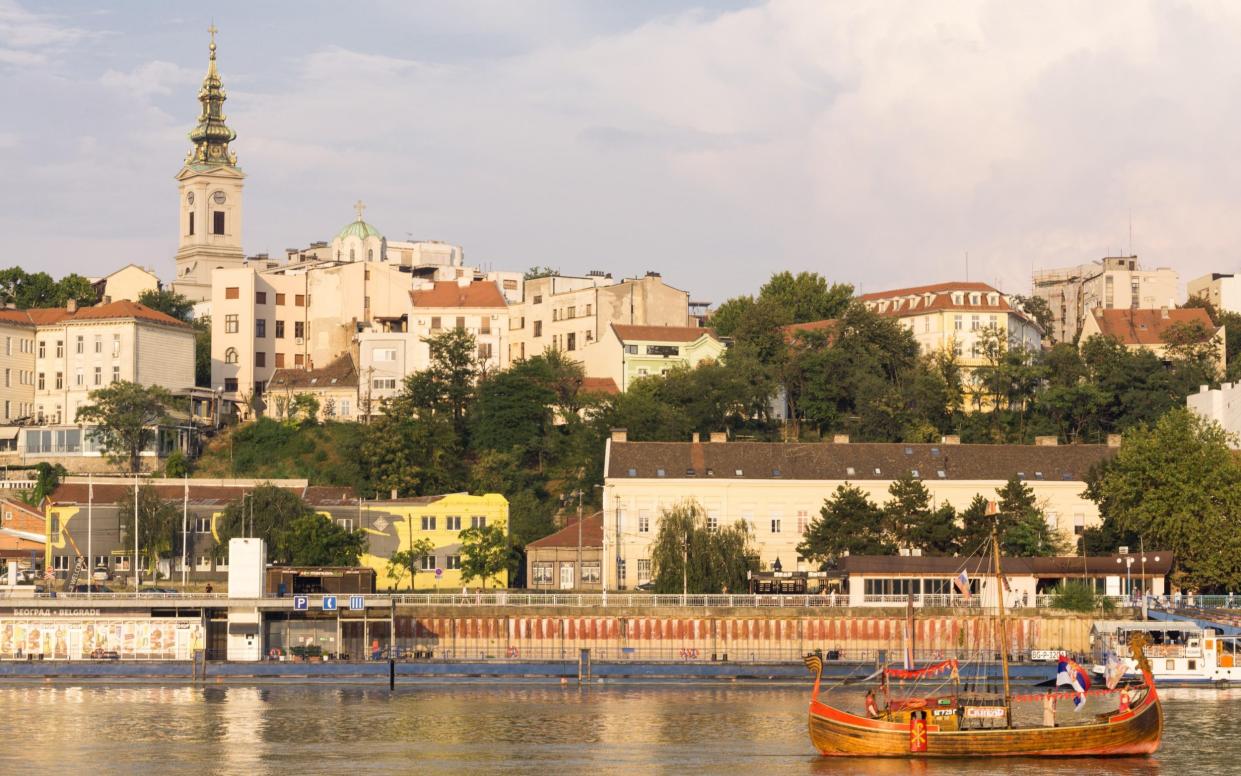
Walk across Kalemegdan Park of an afternoon, and you feel yourself drifting into history.
Not, admittedly, immediately. First you have to cut past the clusters of older men huddled around chess boards – then negotiate a path through the pockets of after-school teenagers, smoking and flirting by the perimeter wall, below which the land drops to the river Sava.
But wander farther in, north, towards the city’s great fortress, and the centuries close in around you. In this labyrinth of gateways, moats, look-outs and defensive positions, you see the 300 or so years that Belgrade spent under Ottoman control – and the long decades when Austria-Hungary ruled this particular roost.
Peer carefully at the stonework and you notice Roman fingerprints too; those telltale flat bricks that speak of centurions on guard, of the eagle standard held aloft in – in this case – the ancient settlement of “Singidunum”.
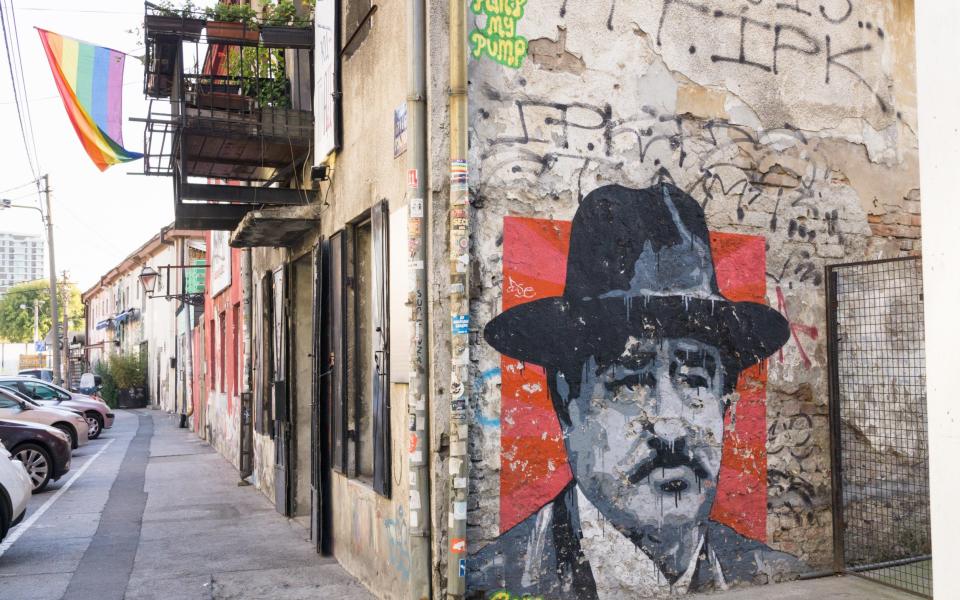
It is only when you reach the furthest battlement that you really encounter a “modern” Belgrade, in The Victor – a giant warrior statue, forged by the Croatian sculptor Ivan Mestrović. Unveiled in 1928, 10 years after the end of the First World War, it celebrates the reemergence of the Serbian state, staring north into what was once Austrian territory.
And it is here that I fully grasp the significance of the location. Beneath the statue and the fortress, the Danube sweeps around its corner, swallowing the Sava, stealing its soul and carrying it off east, towards the Black Sea. A continental junction. A line in the sand. A place where empires might – and did – collide. A place to build a major European capital.
And Belgrade is a major European capital. Of that there is no debate. It is the biggest city in what was Yugoslavia, the third biggest city (after Budapest and Vienna) on the Danube – a one-time romantic stop for the Istanbul-bound carriages of the historic Orient Express.
A major city, back on the map
Not that you need to take the train there now. At the end of October, it rejoined the roster of cities served directly by British Airways (from London Heathrow). This ended a 13-year absence, reversing our national airline’s 2010 decision to abandon the route, having deemed it unprofitable in the face of competition from Jat Airways (the former Yugoslavian flag-carrier, now rebranded as Air Serbia), and low-cost disruptor Wizz Air.
You might argue that this relaunch re-completes a jigsaw. With no disrespect intended to Sarajevo, Tallinn or Bern – and with the exceptions of Helsinki (served via a codeshare with Finnair), and Moscow and Kyiv (off-limits for grimly obvious reasons) – Belgrade had been the only major European capital not visited by British Airways. Suddenly, a city that the truly curious traveller should wish to experience is considerably more accessible.
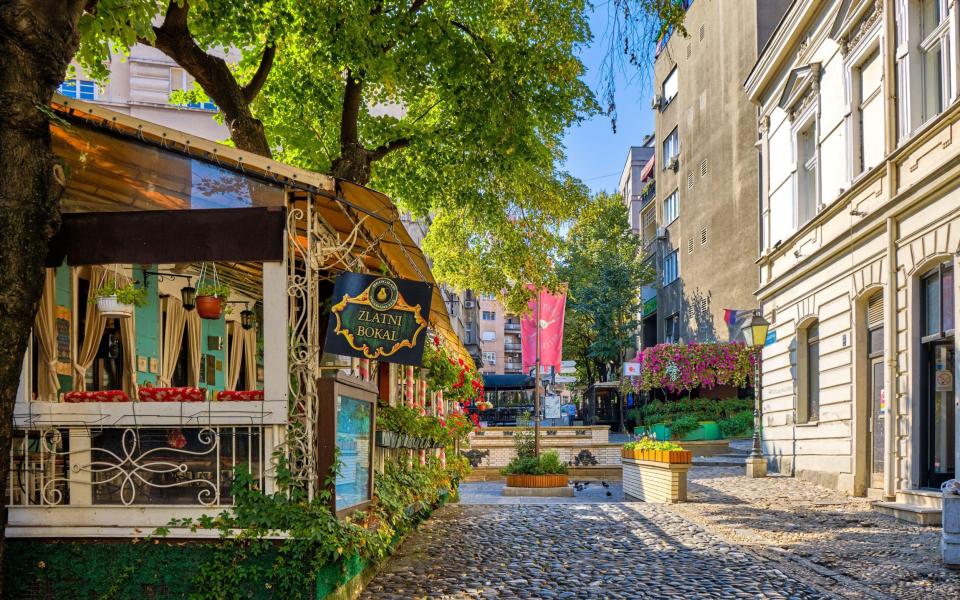
I am certainly curious about it – watching the fields slip below the wing, the nearby city of Novi Sad visible, curled into its own Danube curve, as the plane begins its descent. I am more curious still on the road in, through the sprawl of “New Belgrade”, where the Western City Gate rears up in tribute to the politics and aesthetics of a vanished epoch.
It is everything you might expect of a place which spent half a century, if not entirely behind the Iron Curtain, then adjacent to it; a double tower block, prodding the sky at a height of 459ft (140m). Constructed by the Serbian architect Mihajlo Mitrović in 1979, it was supposed to be half residential, half office space, with a revolving restaurant at the top.
Only the apartments are still in use, but it remains a statement; the Communist 20th century writ large as you enter the city – austere, Brutalist, unamused.
And yet, it is also an epic misdirection. Because Belgrade is not a post-Communist city. Not in appearance, anyway. While you will, of course, stumble across bleakly dreary relics of the Sixties and Seventies – the cracked paving stones, rising damp and general decay of the Bezistan shopping centre, for example – the city does not recognise itself in such a broken mirror. It has had too many past lives to see only one of them in reflection.
‘Many boots have walked these ways’
If pushed, Belgrade will perhaps claim to be the Renaissance Revival peacock that emerged in the late 19th century, as the last clenched fingers of Ottoman control were prised from the throat. The man who secured this release (in 1862) – the then-Prince of Serbia, Mihailo Obrenović – is still there at the heart of the matter, in the now incongruously named Trg Republike (Republic Square).
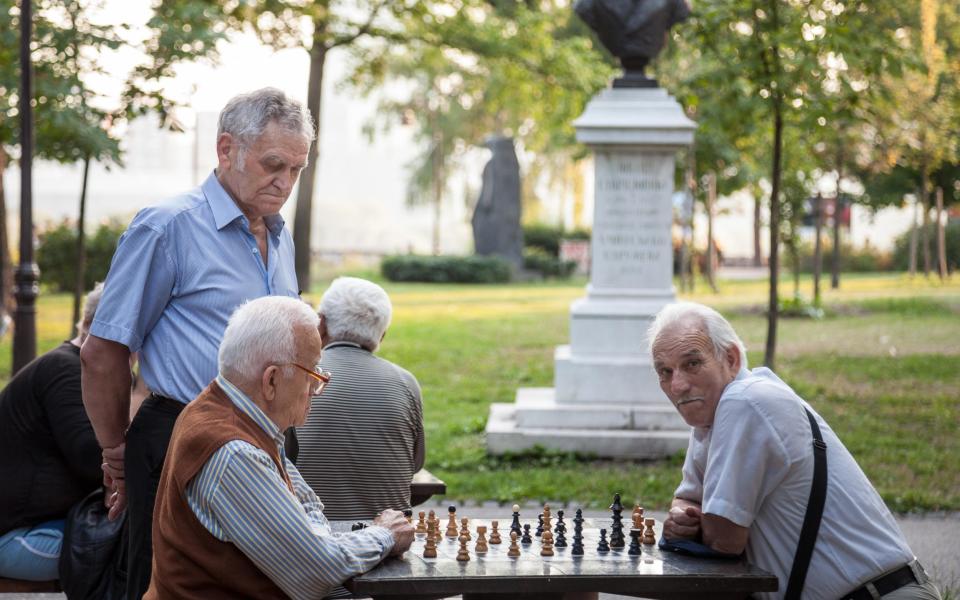
There he sits on bronze horseback, surrounded by the trappings of his changing time – the National Museum of Serbia, with its palatial facade and wealth of exhibits (from fragments of Roman Belgrade to an art collection that includes paintings by Picasso, Renoir and Matisse), the similarly ornate National Theatre.
Continue north-west, into the historic centre (Stari Grad), and the same era continues, with the same man saluted, on the main pedestrianised shopping drag of Knez Mihailova Ulica (Prince Michael Street). There is further elegance here – the lovely Art Deco bookstore on the ground level of the Serbian Academy of Sciences and Arts; the genteel Kafeterija Magazin 1907, a coffee shop in a Belle Époque department store on the cross-street of Kralja Petra, where a grand iron staircase still connects the floors.
But appearances can be deceptive. These two same streets were the cardo maximus and decumanus maximus of ancient Singidunum. Many, many boots have walked these ways.
Different moments leap out on almost every corner. At the top of Terazije – the main north-south traffic artery through the centre – it is a specific moment and place; a Russia in thrall to the early 20th century, the Revolution still a decade away, the Tsar still on the throne.
The Hotel Moskva is a jewel of 1908, caught in the brief architectural window of Russian art nouveau, and very happy to stay there – day-dreaming in ornate mosaics on every floor. In the lobby bar, a grand-pianist tinkles Tchaikovsky. I cannot quite believe that the guests quaffing champagne as they listen are not waiting for the Orient Express.
You can jump decades in minutes. At the intersection of Terazije and Trg Nikole Pasica, a basalt column recalls April 6 1941, the date the German invasion of Yugoslavia began. At the park’s south-east edge, the 15th-century Bajrakli Mosque is a last man standing; the only surviving Islamic place of worship from an Ottoman Belgrade that had 273 of them.
Head south of the centre, meanwhile, into the leafy streets and refined villas of Vracar, and you find yourself back in the 19th century. Perhaps, also, in New York. It was, after all, in the Big Apple that the Serbo-Croatian electrical engineer and reimaginer of worlds Nikola Tesla conjured his foremost inventions.
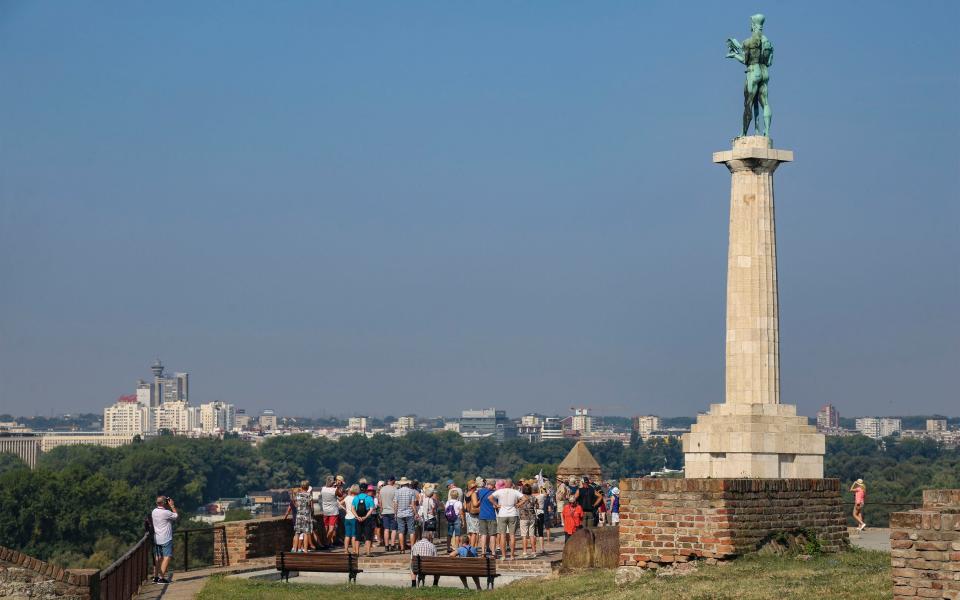
Many of them are here in the museum that bears his name – the spark and lightning of the Tesla Coil; the rotating magnetics of his Egg of Columbus. As, too, is the man himself – his urn a gold orb in a darkened chamber.
Vracar also hosts Belgrade’s most prominent landmark – although, like the Western City Gate and the Roman cross-streets in Stari Grad, the Church of St Sava is a dissembler. On my first glance, it could hail from any point in the last millennium. Then I think of Hagia Sophia in Istanbul, and remember that vast medieval basilicas tended to undergo Ottoman modification.
In shape and scale, St Sava is not so different to its Turkish cousin, yet its foundations are far newer. Ground was broken in 1935, but the subsequent seven decades brought numerous issues, to the extent that – technically – the building is still incomplete.
But it looks the part, its green dome visible across the city, its interior richly decorated with gleaming gold and bright frescoes, many of them detailing the life of the titular 13th-century archbishop and kingmaker who became Serbia’s patron saint. Only one patch of wall, on the right side of the nave, is unfinished; its frescoes are still being applied behind tarpaulins. As with the Hotel Moskva, Russian money will ensure the work is done. Vladimir Putin visited St Sava in 2019 and declared that he would finance its completion.
A tug of war between east and west
The relationship between Belgrade and Europe’s pariah state is intricate and close; an alliance on political, religious and linguistic lines that has largely weathered the war in Ukraine, and long ensured that Serbia is caught in a tug of war between Europe’s west and east.
This push-me-pull-you was there in the direct aftermath of the Second World War, when the leader of what was then Yugoslavia, Josip Broz Tito, feigned to accept the rise of the Eastern Bloc, only to defy Stalin in 1948 and carve out existence on the edge of it.
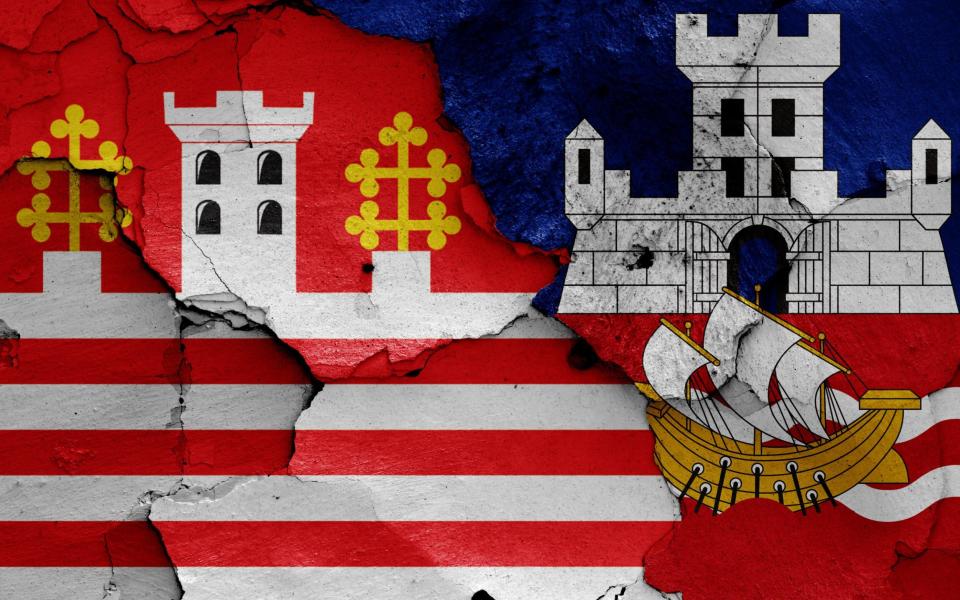
It was an awkward position to hold; as awkward, perhaps as Tito’s place in history. He was, by most definitions, a dictator, who ruled his land for 36 years (until his death in 1980). Yet he remains hugely beloved in a Serbia that was a prime part of his power-base.
He is still in Belgrade too, in wealthy hillside Dedinje, where his former residence is now the Museum of Yugoslavia. He lies under a weighty marble slab in the House of Flowers, his onetime winter garden. On the morning I pass by, there is no shortage of mourners, silent and subdued, heads bowed at the grave. The wider museum also pays respect – in nostalgic photos of life in Tito’s Balkans; in a range of trinkets given to the president by other world leaders, including a fragment of Moon rock gifted by Richard Nixon in 1970.
By the time I’m back in the centre on Birčaninova Ulica, gazing at the derelict bulk of the old Ministry of Defence building – all but destroyed by the NATO bombing of Belgrade in 1999, during Yugoslavia’s bitter disintegration – I’m convinced that the Serbian capital is trapped in a series of different yesterdays, each of them chiselled into its infrastructure.
But look around, and it isn’t difficult to spot the city of now. It is there in Belgrade Design District, where fashion boutiques (Klasa Klasa; Marija Handmade), art stores (Gallery 1250) and chocolatiers (Aguara) offer chic 21st-century shopping just behind the crumbling Bezistan. It is there at Crna Ovca (Black Sheep), a local ice cream company with five gelaterias across the city, and wild frozen flavours such as “custard cream pie” and “sesame coffee”. It is certainly there at New Balkan Cuisine, on Kneginje Ljubice, where the Michelin-listed menu includes oven-baked cheese with raspberries and truffles.
And it is there, most seductively, below Kalemegdan Park, behind an (almost) unmarked door at Uzun Mirkova 7, where Beograd Koktel Klub revels in a speakeasy vibe. At least, I think it does. After my third King Cole (named after Nat; a potent twist on an Old Fashioned, with extra honey), the year has ceased to matter.
Pick an era, any era, in this faultline city. It will be here – hemmed in by the Danube, and its eternal eastward motion.
Getting there
British Airways (0344 493 0787) flies to Belgrade three times a week from London Heathrow. Return fares from £105.
Staying there
Double rooms at the Hotel Moskva (00381 11364 2000) start at £113.
Touring there
Regent Holidays (0117 453 3001) offers a four-night “Belgrade Short Break” that explores the city in depth, then takes a side-trip to Novi Sad. From £1,155 a head – including flights, transfers, guides and accommodation at Hotel Moskva. For more information see serbia.travel.

